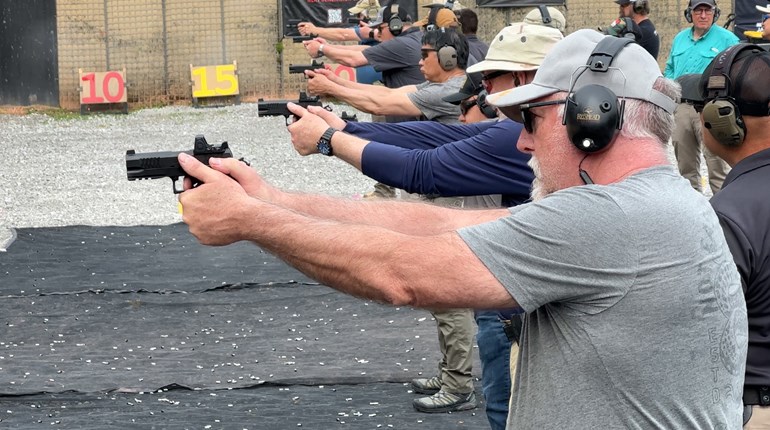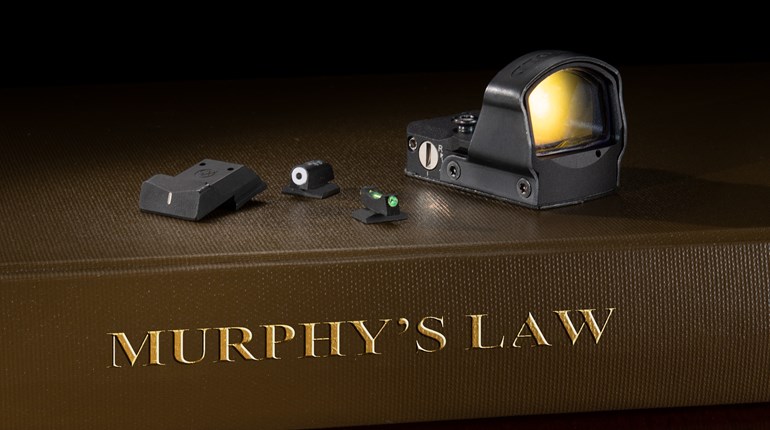
I happened across a news story the other day about Porsche’s new entry-level SUV. What does this have to do with a Walther pistol? Bear with me. Anyhow, like many people I wondered what Porsche was thinking when it added a (relatively) reasonably priced compact crossover to its lineup. In the story, a Porsche executive explained that back in the 1990s, the company’s lineup had gotten so small and narrowly-focused on one type of vehicle at one price point, it almost went under because it couldn’t respond to market changes. With a broader lineup, the manufacturer could weather fads and trends, as well as getting buyers into the “Porsche family” at a younger age.
Similarly, at the turn of the millennium, Walther’s catalog offerings were pretty sparse. There was the PPK (the continued existence of which hopefully results in annual gift baskets and thoughtful Thank You cards from Walther HQ in Ulm to the Ian Fleming estate), and the P99, a feature-packed-but-spendy striker-fired service pistol priced within spitting distance of Heckler & Koch territory. Other than a handful of low-volume, high-end target pistols, that was pretty much the extent of the Walther pistol catalog.
The introduction of the P22 a dozen years ago was a smashing success—a reasonable percentage of the generation just now reaching handgun-buying and carry-permit-acquiring age had their first experience firing a pistol at the trigger of Walther’s little blowback rimfire. They might have even had dad or grandpa helping to hold it up to offset the weight of a small suppressor screwed on the threaded barrel. If this cohort was about to buy their first CCW pistol, Walther needed to be ready for them.
Other than the slightly odd-duck PK380, however, the next most reasonably priced, dedicated CCW offering from Ulm was the PPS. Now, don’t get me wrong, the PPS is an outstanding carry gun, but on a Ramen-heavy diet, paying off student loans and the note on a secondhand Civic, it looks a little pricey compared to the competition. Walther needed a reasonably priced carry gun with Teutonic cachet, and the company found it in the new CCP.
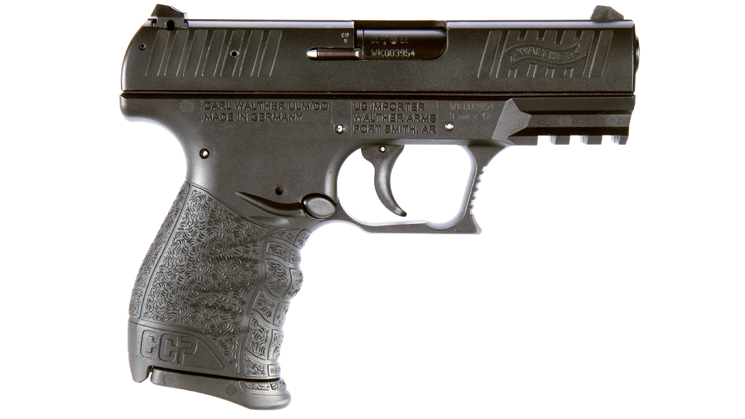
Even the name of the new pistol tells you what it’s for: Concealed Carry Pistol. Styling-wise, it’s obviously a Walther, with curves and textures that match the new look found on the PPQ and PPX. A striker-fired gun with a polymer frame and a steel slide (or “barrel housing,” as Walther terms it) there’s nothing at first glance to mark the gun as a departure from the norm. After all, compact, single-stack nines are as common as promises in an election year right now, so what makes this one different?
Well, Walther calls the difference “Soft Coil” technology, which is the company’s trade name for gas-delayed blowback operation. This method of firearms operation dates back to World War II Germany. Basically, instead of having the slide mechanically locked to the barrel like in a normal recoil-operated pistol, there’s a small gas port in the barrel, just ahead of the chamber mouth.
As the handgun fires, high-pressure gas is bled through this port into a cylinder below the barrel, where it resists the rearward motion of a piston connected to the slide. Once the bullet leaves the muzzle, like a champagne cork leaving the bottle, the pressure is released and the slide can continue rearward, ejecting the spent case and then cycling forward to strip a fresh round from the magazine.
This uncommon operating system is perhaps best known from the Heckler & Koch P7 series and the Steyr GB, which will probably have some halo effect on the Walther CCP. What gun nerd can resist some funky-cool German engineering solutions offered at a reasonable price?
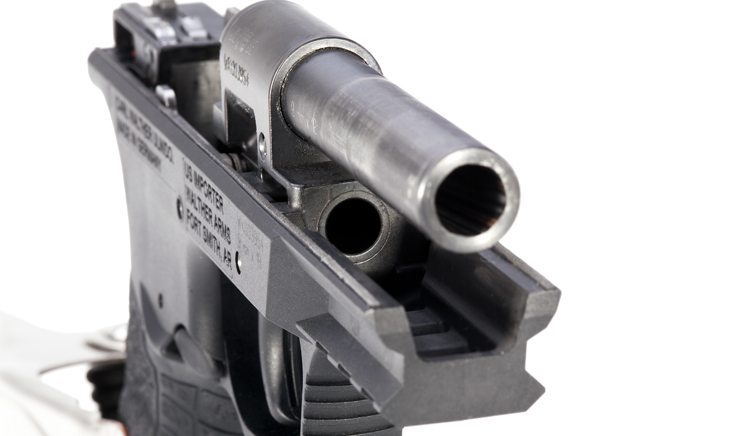
Apart from the gas-delayed operating system, the CCP’s layout is fairly conventional. It has a reversible magazine catch, but the slide-stop lever and low-profile thumb safety are set up only on one side. The thumb safety and other controls fall readily to hand for the right-handed shooter. Given the length of the trigger pull and the presence of a drop safety, the thumb safety is maybe not strictly necessary for carry in a good holster with a covered trigger guard, but it’s good to see nonetheless.
In length and height, the CCP falls between the Smith & Wesson Shield and the Glock G19. It’s a slim gun, both in width as well as measured around the grip circumference at the trigger, where it was slightly smaller than even my 1911s (just under 6.75 inches, where a 1911 with VZ grips and a long trigger measured slightly longer than that). It weighed 22.7 ounces empty on my postal scale, and 27.1 ounces with a full load of 8+1 Winchester 147-grain JHPs.
Other side effects of the Soft Coil operating system are also noticeable. For instance, the fixed barrel, with its concentric recoil spring, is what keeps the slide aligned with the frame—there are no frame rails as such. For another, since gases from the fired cartridge help to hold the slide closed instead of relying on the weight of the slide or a heavy recoil spring, the slide is easy to operate. Almost every one of the novices I let try the CCP remarked on how easy the slide was to cycle compared to a standard, recoil-operated 9 mm pistol. Further, since it’s operated by gas pressure bled from the barrel, the system is somewhat self-regulating for higher-pressure loads.
Drawbacks to the gas-delayed blowback system are twofold. First, it requires reasonably frequent cleaning. The gun has to be field-stripped (and more on that later) and a special, included tool is used to scrape the excess carbon fouling out of the gas cylinder. Second, since gasses from just in front of the chamber are being vented into a cylinder located in the frame, the frame gets hot. Because the steel gas cylinder is buried inside a polymer frame, the heat is not as noticeable as it was on some older gas-delayed guns like the H&K P7, but if you run through a few boxes of ammo in short order, you’ll definitely notice the area above the trigger becomes toasty to the touch.
So is the unusual operating system worth it? Especially if, as suggested, the Soft Coil system reduces muzzle flip, moderates recoil and makes the slide easier to operate for folks with less grip strength? To find out, I took the pistol to the range on several trips, putting more than 500 rounds through it, and letting other shooters of varying sizes, ages, and levels of experience sample the CCP.
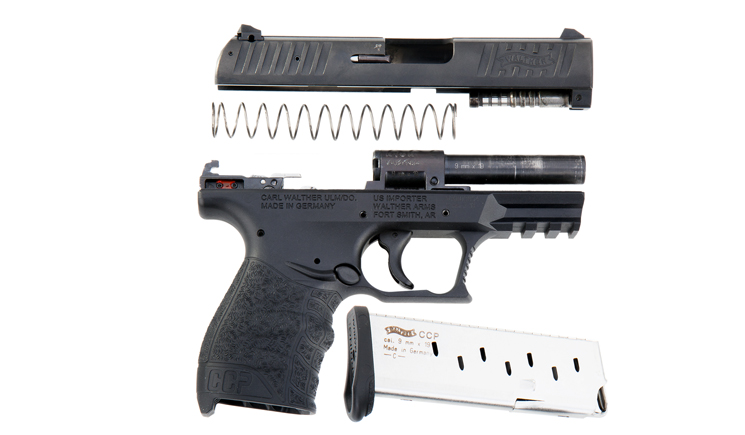
For starters, the gun was reasonably accurate for a compact carry piece with a sub-4-inch barrel, especially given the mediocre shooting skills of your faithful correspondent and the lack of anything as sophisticated as a mechanical rest (the CCP was shot at 25 yards off an improvised sandbag rest on my range bag).
Everyone I let sample the CCP commented on its mild shooting characteristics for a slim, lightweight 9 mm pistol. Despite the wide variety of hand sizes, nobody complained about the controls or the way the gun handled. Whatever the German word for “ergonomics” is, the Walther guys probably have it on posters hanging around the design offices. The only real beef in the control-layout department is, in trying to make the slide-stop lever easier to reach, Walther also made it easier for people who use an aggressive thumbs-forward grip to inadvertently put a thumb atop it and prevent the pistol from locking rearward on the last shot.
In the month I had the gun for testing, I put better than half a case of ammunition through it with no stoppages. While not definitive by any means, it is definitely a good start. We do, in fact, have an accurate, soft-shooting, reasonably priced 9 mm single-stack carry pistol, just like the label promised. Are there any downsides? I noticed two.
The first is the takedown method. Like many inexpensive blowback pistols, the fixed barrel of the CCP requires a plug at the rear of the frame to be depressed in order to allow the rear of the slide to be lifted up and then the whole slide assembly to be run off the front of the gun. In the case of the CCP, this frame plug is engaged by a little hook that requires a special tool to depress. Walther points out in the manual that, if the special tool gets lost or broken, you can use an ordinary punch to depress the plug and a small screwdriver to lift the hook, while your third hand retracts the slide and then removes it. Annoying, but not the end of the world. If being a hassle to strip and assemble were a deal-breaker, the full-length 1911 guide rod would have died years ago.
The second downside is the nature of the trigger pull. When my RCBS trigger scale reported the test gun’s pull was consistently greater than 5 pounds, I was surprised. I would have guessed it was half again that weight—partly because of the length of the pull, which always makes a trigger feel heavier to me, but also because of the trigger pull’s nature. There’s a long take-up and the whole distance is full of, for lack of better terminology, “scritchy scratchy” little spots of hesitation and grittiness. It feels as though one is trying to use a lever to compress a long coil spring in a little tunnel that hasn’t been polished absolutely smooth. Which, when I think about it, is probably exactly what’s going on.
But this is generally gun-snob quibbling. The people who griped about the trigger were friends who were at the range shooting their $2,000+ custom 1911s, and they’re not necessarily the target demographic for this gun. Of the regular shooters I handed the CCP to, most handed it back asking how much it cost and when and where could they buy one?
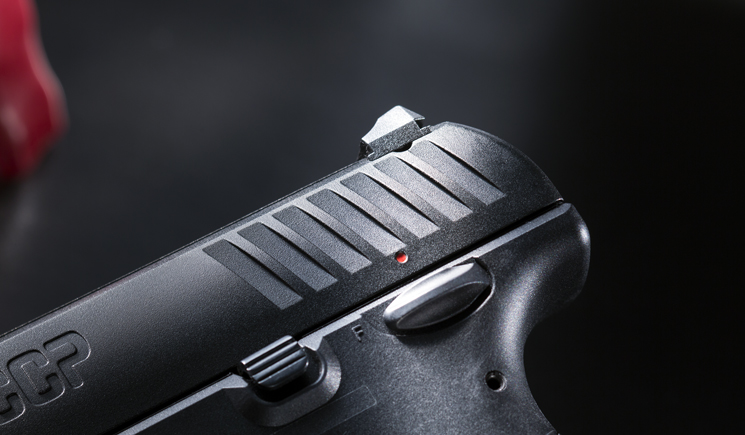
Their enthusiasm is easy to understand, too. The CCP is a good-looking little gun. It’s small and light and seems to be pretty easy for a wide range of skill levels to run well. With the long trigger pull backed up by a drop safety—as well as a manual thumb safety—I wouldn’t be concerned carrying this pistol in a purse holster or other off-body carry setup. The thin size of the single-stack magazine makes carrying a spare easy, since it’s smaller than a candy bar.
Walther, via its Umarex connections, has turned out a reasonably priced, entry-level, single-stack CCW piece. It has both the Walther name and the exotic gas-delayed blowback operating system to differentiate itself from the crowd. The latter alone makes it look pretty exotic compared to the more run-of-the-mill choices it competes against. Those features might be just what it takes for that first-time handgun buyer who grew up shooting dad’s P22 to pick up a CCP for their first concealed-carry piece, and it would be a very sound choice.
Specifications
Manufacturer: Walther; (479) 242-8500
Action Type: Delayed gas-blowback, semi-automatic
Caliber: 9 mm
Capacity: 8+1 rounds
Frame: Polymer
Barrel Length: 3.54 inches
Rifling: 6 grooves; 1:10-inch RH twist
Sights: 3-dot; windage-adjustable rear
Trigger Pull Weight: 5 pounds, 15 ounces
Length: 6.41 inches
Width: 1.18 inches
Height: 5.12 inches
Weight: 22.2 ounces
Accessories: Two eight-round magazines, lock, manual
MSRP: $469

Velocity measured in fps at the muzzle for 10 consecutive shots with a Shooting Chrony Beta chronograph. Temperature: 54 degrees Fahrenheit. Accuracy measured in inches for five consecutive, five-shot groups at 25 yards from a sandbag rest.













